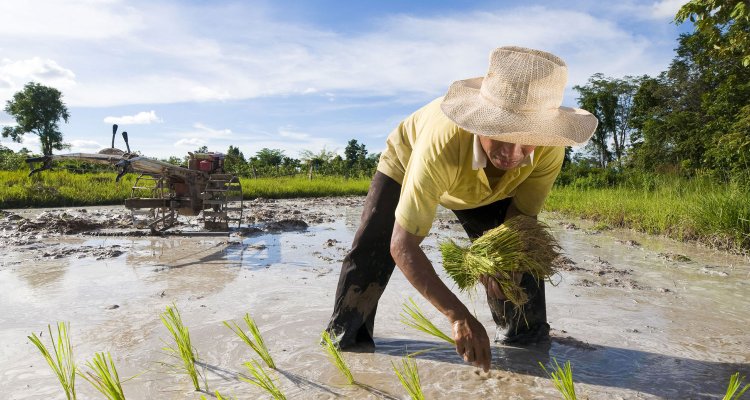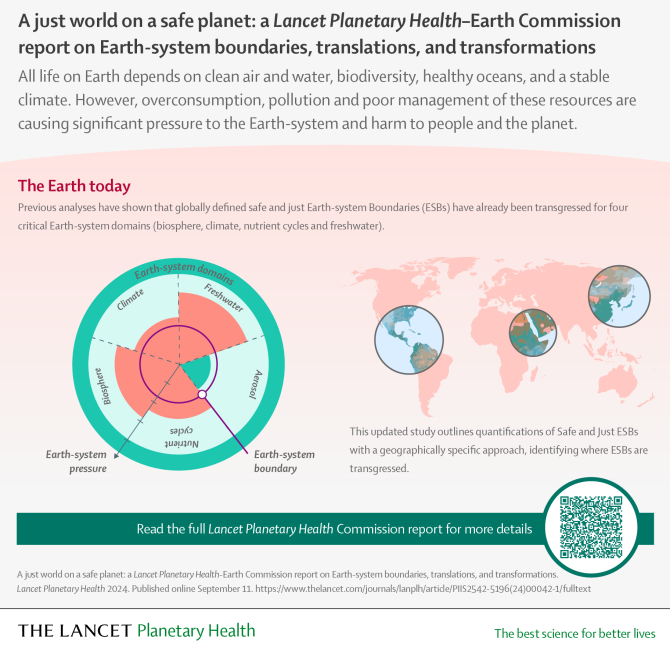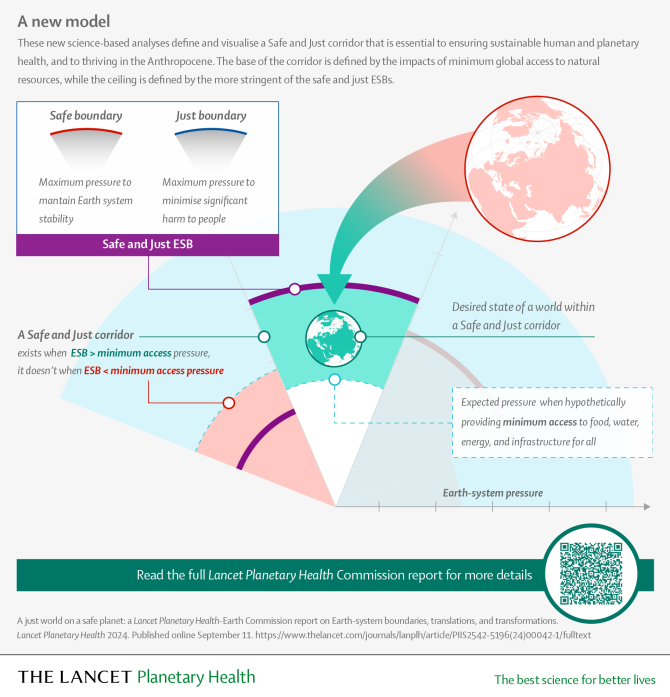
News
New findings on Safe and Just Planetary boundaries
New research published today in The Lancet Planetary Health shows that the planet will only remain able to provide even a basic standard of living for everyone in the future if economic systems and technologies are transformed and resources are more fairly used, managed and shared.
The new study builds on the concept of the “Safe and Just Boundaries” - within which harm to humans and nature can be minimised while everyone can be provided for - and sets out the paths to reach and stay in the safe and just corridor within these boundaries. The researchers made projections forwards to 2050, and found that the corridor will shrink over time, unless urgent transformations are made.
The research, that was co-authored by over sixty leading natural and social scientists from the Earth Commission, found that inequalities and overconsumption of finite resources by a minority are key drivers of this shrinking. The research also looked where Safe and Just boundaries have been breached on the planet, and overlayed this with the number of people and their income level living in those regions. The findings show that vulnerable communities, living in poverty are often most affected by harm from climate change, biodiversity loss, pollution and water shortages. For example, under a 2°C temperature stabilisation target in 2100, Bangladesh’s population will be among the most affected by sea level rise with approximately 30 million people exposed.
Safe and Just Earth System Boundaries
The study elaborates on the Safe and Just Earth System Boundaries published in Nature last year, which found that most of the vital limits within which people and the planet can thrive have already been surpassed. There are boundaries for climate, freshwater (surface and groundwater), fertilisers (nitrogen and phosphorus), biodiversity (managed land and intact nature) and aerosol pollutants, which are the most important interconnected systems and critical resources upon which we and the planet’s stability depend.
Wim de Vries, Professor of Environmental Systems Analysis at Wageningen University & Research, one of the co-authors of the research on fertilizer boundaries: “To optimize food production while reducing harm to air and water quality, it is crucial to use nitrogen and phosphorous in agriculture much more efficiently. This includes a much better spatial allocation of fertilizers, increasing nitrogen and phosphorus inputs in for example Africa and reducing them in China, USA and Western Europe. In addition, we need to reduce emissions from non-agricultural sectors such as sewage or industry. Doing this effectively requires coordination.”

Urgent transformations required
The findings show that already vulnerable communities are often the most affected by Earth system change that impacts the health of people and ecosystems - but everyone, including the wealthy, is at risk. Dr Simona Pedde, Scenario Analyst at Wageningen University & Research and previously Science Lead and coordinator at the Earth Commission: “Growing socioeconomic inequalities are the reason that the safe and just corridor within earth system boundaries is shrinking or getting more exceeded and, for the first time, the Earth Commission quantified the global variation in violation of the boundaries with a novel justice approach. This knowledge guides how transformations improve access to resources to all while living within the safe and just corridor. I expect the next steps of the Earth Commission to delve deeper on what and how these transformations enable this.”

The paper calls for change in three areas. Firstly, a well-coordinated, intentional effort between policymakers, businesses, civil society and communities can push for changes in to policies and funding mechanisms that can address inequality whilst reducing pressure on nature and climate. Secondly, fundamental to the transformation is more efficient and effective management, sharing and usage of resources at every level of society. And thirdly, investment in sustainable and affordable technologies is essential to help us use fewer resources and to reopen the safe and just corridor for all. Businesses and cities in particular have a leading role to play in driving these transformations, becoming better stewards of Earth’s natural resources. This paper provides a guide to how they can reduce their impact on the planet.